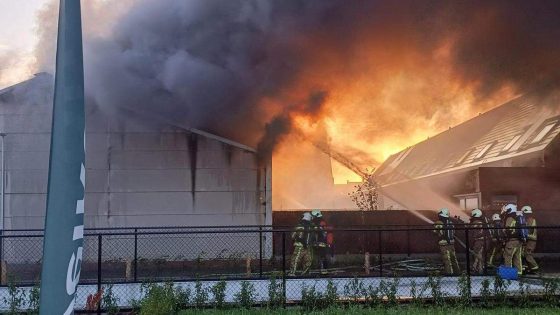A large fire broke out in a warehouse in Izegem, producing a thick black smoke plume visible far beyond the town. The intense blaze, reported around 2025-07-16 09:34:00, quickly drew multiple fire brigades from the region to the scene. Despite part of the warehouse collapsing, firefighters prevented the fire from spreading to a nearby row of houses.
- Fire produced large black smoke plume
- Firefighters prevented fire spreading to houses
- Residents advised to keep windows closed
- Asbestos detected; nearby residents evacuated
- Authorities conduct ongoing contamination investigations
- Production area completely destroyed by fire
However, a second adjacent warehouse caught fire and was completely destroyed. Authorities urged residents to keep windows and doors closed due to hazardous smoke containing asbestos particles. Several people living close by, including those in nearby service flats, were evacuated as a safety precaution.
What measures are in place to protect locals, and how severe is the damage? Here is what we know so far about the Izegem warehouse fire and its ongoing impact.
Why did this fire escalate so quickly, and what risks remain for the community? The presence of asbestos in the smoke raises serious health concerns. Fire officials are still monitoring the site, with civil protection teams investigating the cause and assessing contamination levels. Key points include:
- Fire under control but with occasional flare-ups and extensive damage to the production area
- Evacuations of about eight residents from nearby service flats, temporarily housed in a sports hall
- Police urging locals to maintain distance and keep windows closed to avoid inhaling toxic smoke
- CO and pollutant measurements ongoing before residents can safely return home
As investigations continue, residents of Izegem and surrounding areas should stay informed through official channels and follow safety instructions. How can communities better prepare for such emergencies in the future? Staying vigilant and cooperating with authorities will be crucial in minimizing risks and ensuring a safe recovery.
































